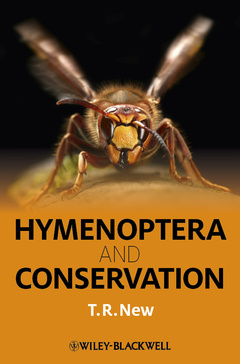Description
Hymenoptera and Conservation
Author: New T. R.
Language: English
Subject for Hymenoptera and Conservation:
Keywords
largest; orders; insect; insects; predators; parasitoids; importance; ecological; pollinators; forcefully; notice; supply; human; governors; key ecological; food; influence; recent declines; alien; agents; control; pests; concerns; introductions
230 p. · 17.8x25.4 cm · Hardback
Description
/li>Contents
/li>Biography
/li>
Prefacevii
Acknowledgementsxii
1 Introducing Hymenoptera and their Conservation 1
Perspective 1
Classification and diversity 1
Importance for conservation 14
Social life and conservation 24
2 Alien Hymenoptera in Classical Biological Control 28
Introducing a dilemma 28
Conservation concerns 28
3 The Junction of Biological Control and Conservation: Conservation Biological Control and Cultural Control 41
4 Introduced Bees: Threats or Benefits? 51
5 Social Wasps and Ants as Aliens 63
Social wasps 63
Ants 68
Current perspective 79
6 Pollinator Declines 82
Introducing the concerns 82
Threats to pollinators 92
Pathogens and parasites 93
Pesticides 97
Pollution 99
7 Levels of Conservation Concern and the Shortcomings of Current Practice 100
Foci for conservation 100
Species focus 104
Biotope and habitat focus 122
8 Habitat Parameters and Manipulation 138
Defining and assessing habitats in the landscape 138
Habitat manipulations for conservation 141
Natural and agricultural environments 141
Urban environments 147
Practical conservation 150
9 Species Case Histories 168
Franklin’s bumblebee (Bombus franklini) 170
The great yellow bumblebee (Bombus distinguendus) 170
Wallace’s bee (Chalicodoma pluto) 173
Neopasiphae simplicior in Western Australia 174
The antennal-waving wasp (Tachysphex pechumani) 174
The dinosaur ant (Nothomyrmecia macrops) 175
The red-barbed ant (Formica rufi barbis) in Britain 177
10 Assessing Conservation Progress and Priorities for the Future 179
Introduction: The basic need 179
Monitoring 180
The milieux of concern 185
References 191
Index 214
These books may interest you

Phylogenetics of Bees 196.56 €



